Achieving high accuracy in CNC machining is a common challenge for many manufacturers. Even the slightest error can lead to costly mistakes, poor-quality products, and inefficient production processes.If your CNC machine is not calibrated properly, it could result in dimensional inaccuracies, tool wear, and excessive material wastage. These issues can significantly impact lead times, cost-efficiency, and overall product quality. Misalignment or improper setup can ultimately compromise your reputation in the industry.Fortunately, there are proven strategies to enhance the accuracy of CNC machines. From regular maintenance, proper calibration, and advanced tool management to optimizing the machine environment, several techniques can ensure that your CNC machine performs with peak precision.
Direct Answer:
To make a CNC machine accurate, regularly calibrate its components, maintain optimal environmental conditions, and use high-quality cutting tools. Additionally, implement effective tool wear monitoring and periodic alignment checks to ensure consistent performance and reduce errors.
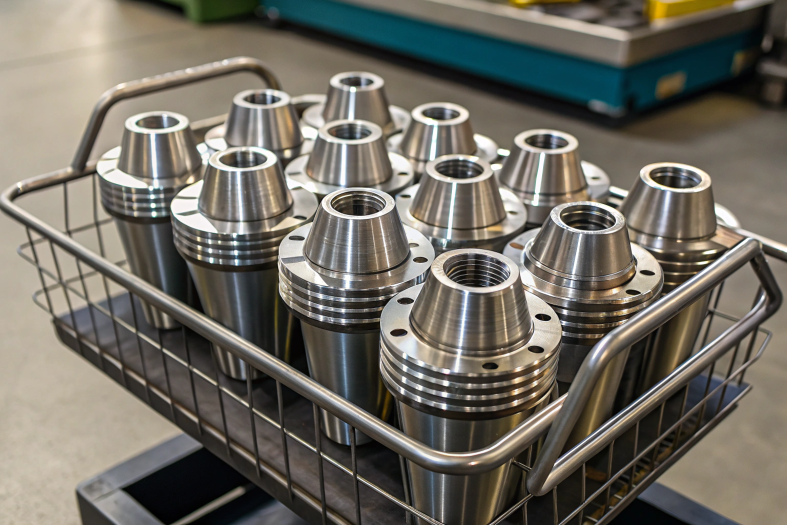
1. Machine Calibration and Maintenance
CNC Machine Calibration Methods
| Calibration Method | Purpose | Method | Tools/Systems |
|---|---|---|---|
| Geometric Calibration | Ensures the machine's axis movements are precise and consistent. | 1. Laser Interferometry: Measures linear and angular deviations. 2. Ball Bar Testing: Checks for errors in circular motion, such as backlash or misalignment. |
- Laser Interferometer - Ball Bar System |
| Tool Alignment and Offset Calibration | Ensures cutting tool is correctly aligned and offsets are accurate. | 1. Touch Probes: Automatically measures tool position relative to workpiece. 2. Tool Pre-setters: Measures tool length and diameter to ensure proper adjustment. |
- Touch Probe - Tool Pre-setter |
| Spindle Calibration | Ensures spindle runs true with minimal run-out, preventing machining errors. | 1. Dial Indicators: Measures radial and axial run-out. 2. Laser Calibration: Monitors spindle rotation for accuracy. |
- Dial Indicators - Laser-based Calibration Systems |
| Thermal Compensation | Compensates for temperature-induced expansion or contraction of machine components. | 1. Temperature Sensors: Monitors machine components' temperatures. 2. Automatic Compensation Software: Adjusts machine movement based on real-time temperature data. |
- Temperature Sensors - Thermal Compensation Software |
| Axis Squareness and Parallelism Calibration | Ensures axes are perpendicular and move in parallel to avoid geometric distortion. | 1. Square Blocks and Micrometers: Measures squareness of machine axes. 2. Software-Based Calibration: Uses algorithms to check and adjust axis alignment. |
- Square Blocks - Micrometers - Calibration Software |
| Dynamic Calibration | Checks for errors that occur during high-speed machining, such as vibrations or tool deflection. | 1. Dynamic Motion Testing: Monitors high-speed movements for deflection or vibration. 2. Vibration Sensors: Measures vibrations during machining and adjusts cutting paths. |
- Vibration Sensors - Dynamic Motion Test Equipment |
| Automated Calibration Systems | Automates the calibration process, reducing manual intervention and human error. | 1. Automated Ballbar Testing: Uses systems like the Renishaw QC20-W to automate testing and data collection. 2. Thermal Compensation via Software: Uses integrated thermal sensors and software to adjust parameters automatically. |
- Renishaw QC20-W - Heidenhain TNC 640 |
| Calibration Frequency | Ensures the machine’s accuracy is maintained regularly. | Calibration should be performed every 3-6 months or after each shift, depending on machine use and operating conditions. | - Regular checks and monitoring |
Best Practices for CNC Calibration:
- Document Calibration Results: Keep records of all calibration tests and results for tracking performance over time.
- Training: Ensure operators are trained on both manual and automated calibration methods.
- Temperature Control: Consider controlling temperature in the workshop to minimize expansion effects on machine parts.
Explanation:
CNC machines must be calibrated regularly to ensure that their movements are precise and consistent. Calibration involves adjusting the machine’s components to eliminate errors caused by wear, misalignment, or environmental factors. Regular maintenance is equally important to keep the machine in optimal working condition and minimize downtime.
Data/Research:
According , manufacturers who follow a strict calibration schedule improve machining accuracy by up to 30%. Additionally, a well-maintained CNC machine can operate for 30-40% longer without performance degradation.
Example:
Boeing has a dedicated calibration department to ensure that their CNC machines operate at the highest level of precision. Their calibration protocols help maintain tight tolerances required for producing aerospace components, reducing errors by 20% and improving product quality over time.
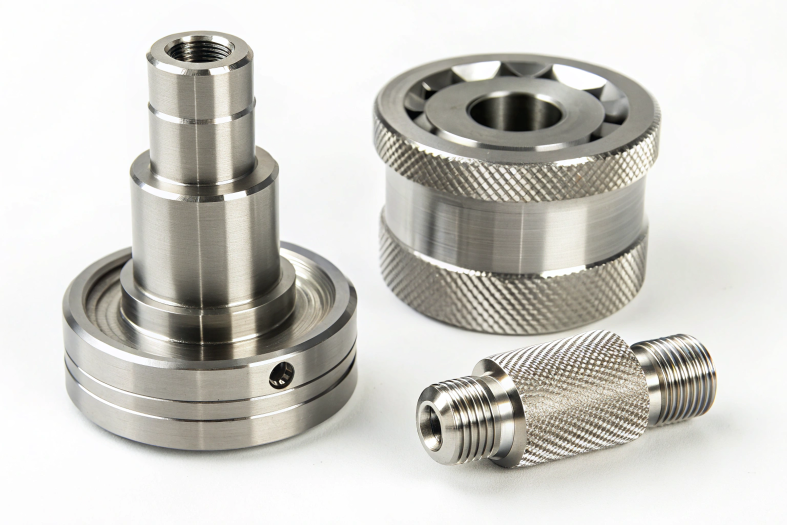
2. Tooling Selection and Quality
Tooling Selection and Quality
| Tooling Method | Purpose | Method | Tools/Systems |
|---|---|---|---|
| Tool Material Selection | Choosing the right material for tools to ensure durability, wear resistance, and performance. | 1. Carbide Tools: Use for high-speed cutting due to their wear resistance and hardness. 2. High-Speed Steel (HSS): Use for general machining with moderate cutting speeds. 3. Coated Tools: Use tools with coatings like TiN, TiAlN for enhanced tool life and heat resistance. |
- Tungsten Carbide Tools - HSS Tools - Coated Tools (TiN, TiAlN, etc.) |
| Tool Geometry and Design | Optimizing tool shape and geometry for improved cutting efficiency and accuracy. | 1. Cutting Edge Angles: Use proper rake and clearance angles to reduce cutting forces and ensure smooth chip flow. 2. Tool Shape: Select tool shape (flat, ball, radius) based on the part geometry and machining requirements. |
- CNC Tool Design Software - Tool Geometry Templates |
| Tool Wear Monitoring | Monitoring tool condition to detect wear and prevent inaccuracies during machining. | 1. On-machine Inspection: Use probes or sensors to check tool condition and wear in real time. 2. Visual Inspections: Periodically inspect tools for signs of wear, chipping, or damage. 3. Tool Life Prediction Software: Utilize software that tracks tool usage and wear patterns to predict tool life. |
- Tool Probes - Wear Monitoring Sensors - Tool Life Management Software |
| Tool Balancing | Reducing vibration during high-speed machining by ensuring balanced tool operation. | 1. Dynamic Balancing: Tools are balanced using dynamic balancing machines to eliminate vibration at high speeds. 2. Precision Tool Holders: Use balanced holders and adaptors to maintain tool stability. |
- Dynamic Balancing Machines - Precision Tool Holders |
| Tool Coating and Surface Treatment | Enhancing tool life, wear resistance, and cutting efficiency with surface treatments and coatings. | 1. Physical Vapor Deposition (PVD): Coatings such as TiN or TiAlN improve hardness and heat resistance. 2. Chemical Vapor Deposition (CVD): Coating process that offers wear resistance for heavy cutting. |
- PVD and CVD Coating Systems - Coated Tool Manufacturers |
| Tool Calibration and Presetting | Ensuring tools are correctly set up and measured before machining begins. | 1. Tool Presetting: Tools are measured before installation using tool presetting machines to determine accurate dimensions (length, diameter). 2. Automated Calibration: Automated systems help to set tool offsets automatically, ensuring precision. |
- Tool Presetting Machines - Automated Calibration Systems |
| Tool Inspection and Quality Control | Ensuring tools meet manufacturing standards and have the required precision for machining. | 1. Micrometer and Calipers: Measure tool dimensions and tolerances to ensure conformity. 2. Surface Roughness Testers: Check the surface finish of tools after coating or sharpening. |
- Micrometers - Calipers - Surface Roughness Testers |
| Tool Life Optimization | Maximizing tool life through optimal selection and maintenance. | 1. Monitoring Cutting Parameters: Optimize feed rates, cutting speeds, and depth of cuts to extend tool life. 2. Tool Path Optimization: Modify tool paths to reduce wear in critical areas of the tool. |
- CNC Software with Optimization Features - Tool Path Simulation Software |
Best Practices for Tooling Selection:
- Select tools based on material: Choose tools with properties that match the material you are machining to maximize efficiency and reduce tool wear.
- Regular tool inspections: Implement regular inspections to identify early signs of tool wear or damage, preventing errors in machining.
- Use high-quality tools: Invest in high-quality tools and coatings to improve machining performance and tool life.
Explanation:
The choice of tooling directly impacts the accuracy of CNC machining. High-quality cutting tools, such as inserts and drills, reduce the likelihood of tool wear and deflection during machining, which can lead to dimensional inaccuracies. Additionally, using tools with the right geometry and material for the specific application ensures that the machining process remains consistent and precise.
Data/Research:
Research by McKinsey & Company shows that manufacturers who invest in high-quality tooling achieve up to 25% better dimensional accuracy and reduce material wastage by 15%. The correct tool choice can significantly extend tool life and improve operational efficiency.
Example:
Toyota uses premium carbide cutting tools in their CNC operations, leading to improved consistency and precision in the production of automotive parts. By using high-quality tools, Toyota has reported a reduction in rework by 10%, ensuring that parts meet the exact specifications required for safety-critical components.
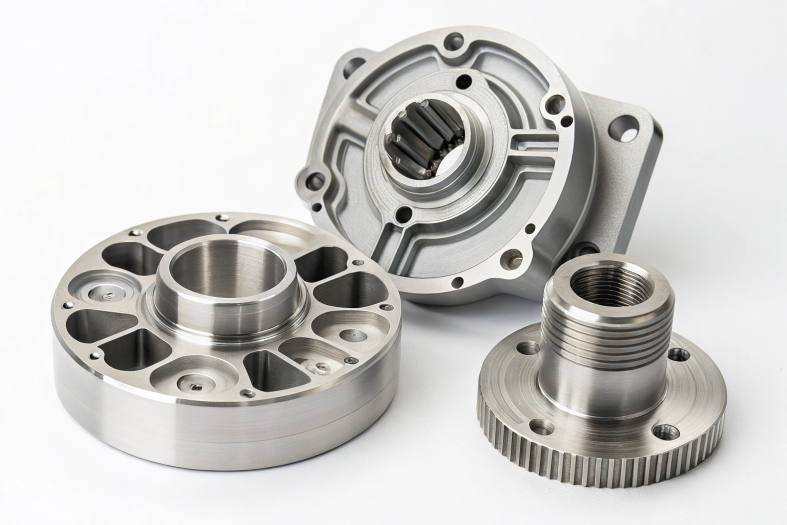
3. Environmental Factors
Environmental Factors and Their Impact on CNC Accuracy
| Environmental Factor | Purpose | Method | Tools/Systems |
|---|---|---|---|
| Temperature Control | Temperature variations can cause material expansion or contraction, affecting machine accuracy. | 1. Climate-Controlled Environments: Maintain a stable temperature (typically around 20°C / 68°F) in the workshop to reduce thermal expansion. 2. Thermal Insulation: Insulate CNC machines and sensitive components to prevent temperature fluctuations. |
- HVAC Systems - Insulation Materials |
| Humidity Control | Excess humidity can cause rust and corrosion on machine parts, affecting tool and component integrity. | 1. Dehumidifiers: Use industrial dehumidifiers to maintain optimal humidity levels around 40-60%. 2. Humidity Monitoring: Install humidity sensors to monitor the workshop environment. |
- Industrial Dehumidifiers - Humidity Sensors |
| Air Quality and Filtration | Dust, oil mist, and other contaminants can degrade machine components and tools, leading to errors. | 1. Air Filtration Systems: Use air purifiers and filtration systems to reduce contaminants in the air. 2. Oil Mist Collectors: Install oil mist collectors to capture airborne particles. |
- Air Filtration Systems - Oil Mist Collectors |
| Vibration Control | External vibrations from surrounding machinery or environmental sources can affect machining precision. | 1. Vibration Isolation Pads: Place CNC machines on vibration-dampening pads or mounts to reduce external vibrations. 2. Foundation Stabilization: Use reinforced concrete or isolation foundations to minimize vibrations. |
- Vibration Isolation Pads - Reinforced Foundation |
| Lighting Conditions | Proper lighting is crucial for accurate tool setups and part inspection. | 1. Uniform Lighting: Ensure uniform lighting throughout the workspace to avoid shadows or glare that could interfere with setups and inspections. 2. Bright, LED Lights: Use LED lights that provide clear, bright illumination without heat generation. |
- LED Lighting Systems - Uniform Lighting Fixtures |
| Workpiece Clamping and Stability | Stability of the workpiece is vital for consistent machining and accurate cuts. | 1. Rigid Clamps: Use rigid clamps or fixtures to hold the workpiece firmly in place during machining. 2. Vacuum Fixtures: For thin or delicate parts, use vacuum fixtures for stable clamping. |
- Rigid Clamps - Vacuum Fixtures |
| Electrical Power Supply | Fluctuations in power supply can lead to inconsistent machine operation and errors. | 1. Uninterruptible Power Supply (UPS): Install a UPS system to ensure a stable power supply. 2. Surge Protectors: Use surge protectors to safeguard against power spikes or dips that could impact machine performance. |
- UPS Systems - Surge Protectors |
| Noise and Acoustic Conditions | Excessive noise can interfere with operators' ability to monitor machine performance and create distractions. | 1. Noise-Dampening Materials: Install soundproofing materials in the workshop to reduce noise levels. 2. Acoustic Barriers: Use barriers or partitions to minimize noise from surrounding areas. |
- Soundproofing Materials - Acoustic Barriers |
| Operator Comfort | Operator comfort directly impacts precision, focus, and overall machine setup accuracy. | 1. Ergonomic Workstations: Set up ergonomic workstations for operators to reduce fatigue and improve focus. 2. Comfortable Environment: Ensure proper temperature, lighting, and seating for operators. |
- Ergonomic Workstations - Adjustable Operator Seats |
Best Practices for Managing Environmental Factors:
- Monitor and control temperature and humidity: Use HVAC systems and humidity sensors to maintain stable environmental conditions within the CNC machine's operating range.
- Maintain cleanliness: Keep the environment free from dust, contaminants, and excessive vibrations to preserve machine performance and extend tool life.
- Optimize lighting: Ensure the workspace has even, bright lighting to aid in accurate setup and inspection.
- Regular environmental checks: Conduct regular inspections and monitoring of the shop’s temperature, humidity, vibration, and air quality to ensure an optimal machining environment.
Explanation:
Environmental conditions, such as temperature fluctuations, humidity, and vibration, can negatively affect CNC machine accuracy. For instance, metal components expand or contract due to temperature changes, which can lead to deviations from the desired dimensions. Vibration from the shop floor can also interfere with machine movements, causing inaccuracies.
Data/Research:
A study conducted by Stanford University reveals that temperature variations of just 1°C can cause a 0.01mm deviation in the machining accuracy of CNC machines. This highlights the importance of maintaining a stable environment in machining facilities.
Example:
Siemens installed climate-controlled rooms in their production facilities to ensure stable temperature conditions for CNC machines. This initiative resulted in a 15% improvement in accuracy and helped Siemens avoid costly rework caused by thermal expansion.

4. Advanced CNC Software and Programming
Advanced CNC Software and Programming Methods
| Software/Programming Method | Purpose | Method | Tools/Systems |
|---|---|---|---|
| CAD/CAM Integration | Ensures precise design and tool path generation from 3D models to CNC machines. | 1. CAD to CAM Workflow: Use CAD software (e.g., AutoCAD, SolidWorks) for design and CAM software (e.g., Mastercam, Siemens NX) for toolpath generation, ensuring seamless data transfer between systems. 2. Feature-Based Programming: Automatically generates tool paths based on part geometry. |
- SolidWorks - AutoCAD - Mastercam - Siemens NX |
| Tool Path Optimization | Improves machining efficiency, reduces tool wear, and increases accuracy. | 1. High-Speed Machining (HSM): Utilize tool paths designed for high-speed machining to minimize cutting time and improve surface finish. 2. Adaptive Tool Paths: Adjust tool paths based on real-time data to optimize material removal. |
- HSMWorks - PowerMill - Autodesk Fusion 360 |
| Simulation and Verification | Minimizes errors by simulating the machining process before actual production. | 1. 3D Simulation: Use 3D simulation software to visually check tool paths and identify potential collisions or inefficiencies. 2. Verification Tools: Utilize software to verify tool paths and machine setup before cutting begins. |
- Vericut - NC Simul - Predator Virtual CNC |
| Real-Time Monitoring and Feedback | Provides real-time data to optimize CNC machine operation and ensure precision. | 1. IoT-Enabled Monitoring: Use Internet of Things (IoT) sensors to track machine parameters like temperature, spindle speed, and vibration during machining. 2. Closed-Loop Feedback Systems: Integrate feedback systems to adjust machine settings based on real-time data. |
- FANUC Intelligent Edge - Siemens MindSphere |
| G-Code Optimization | Ensures precise control over machine operations and improves cycle times. | 1. Automated G-Code Generation: Use CAM software to automatically generate optimized G-code for CNC machines, minimizing manual programming errors. 2. Post-Processing: Customize the post-processor to suit the specific CNC machine and ensure the correct translation of tool paths. |
- Mastercam - GibbsCAM - Edgecam |
| Multi-Axis Programming | Ensures precision in complex parts by using advanced multi-axis machining strategies. | 1. 5-Axis Programming: Use CAM software with multi-axis capabilities to program complex parts that require simultaneous control of five axes. 2. Simultaneous Tool Control: Optimize the use of multiple tools simultaneously to reduce cycle time and improve accuracy. |
- Delcam PowerMill - Siemens NX CAM - HyperMill |
| Adaptive Machining | Enhances machining accuracy by adjusting cutting parameters in real-time based on part geometry. | 1. Real-Time Parameter Adjustment: Automatically adjust feed rates, spindle speeds, and depth of cut based on part material and geometry. 2. Machine Learning Algorithms: Use machine learning to predict optimal machining parameters and adjust them dynamically. |
- Siemens NX CAM - Autodesk Fusion 360 - VERICUT |
| Tool Wear Monitoring and Compensation | Ensures consistent part quality by adjusting for tool wear during machining. | 1. On-Machine Tool Monitoring: Use probes or sensors to measure tool wear and adjust machining parameters. 2. Software-Based Tool Wear Compensation: Program CNC software to compensate for tool wear by automatically adjusting offsets. |
- Renishaw Tool Setter - FANUC Tool Monitoring System |
| In-Process Measurement and Adjustments | Improves machining precision by adjusting the machine in real time based on part measurements. | 1. On-the-Fly Measurements: Use in-process measurement systems (e.g., laser scanning) to measure part dimensions during machining and adjust the tool path or machine settings. 2. Feedback Loops: Implement systems that adjust machine operation based on measurement feedback to improve accuracy. |
- Laser Scanners - Renishaw Probing Systems |
Best Practices for CNC Software and Programming:
- Regular software updates: Ensure the CNC software and post-processors are updated regularly to optimize machine performance and support new technologies.
- Real-time monitoring: Implement real-time data collection and machine feedback to ensure immediate adjustments can be made to maintain accuracy.
- Simulation before machining: Use simulation software to test tool paths before actual machining to avoid costly mistakes.
- Use advanced programming techniques: Leverage multi-axis and adaptive machining strategies to handle complex geometries more efficiently and accurately.
Explanation:
Modern CNC machines rely heavily on software to optimize tool paths, reduce cycle time, and improve machining accuracy. Advanced CNC software can detect potential issues, correct them before they occur, and offer real-time monitoring. Additionally, optimized programming ensures that the machine operates with minimal error and the most efficient tool paths.
Data/Research:
A report by Gartner suggests that the use of advanced CNC programming and real-time monitoring software improves machining accuracy by up to 25%. This is because the software helps identify errors early and optimize processes, reducing waste and increasing precision.
Example:
In 2020, Stryker, a leader in medical device manufacturing, implemented predictive maintenance software for their CNC operations. This software helped improve machine uptime and machining accuracy by reducing unexpected downtime and tool wear, leading to a 12% improvement in accuracy.
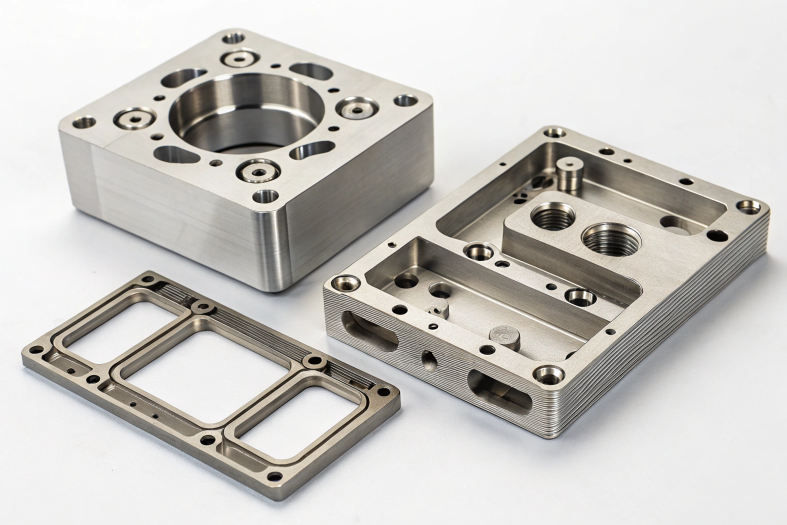
5. Machine Tool Condition and Rigidity
Machine Tool Condition and Rigidity Inspection Methods
| Method | Purpose | Steps | Tools/Systems |
|---|---|---|---|
| Machine Alignment and Geometry Check | Ensures the machine's axes are properly aligned to avoid inaccuracies during machining. | 1. Laser Alignment: Use a laser measurement system to check the alignment of machine axes. 2. Ball-Bar Testing: Use a ball-bar device to test for circularity and roundness errors. 3. Geometric Measurement: Measure and verify critical geometric tolerances such as squareness and flatness of machine parts. |
- Laser Measurement System - Ball-Bar Testing System |
| Spindle Runout and Vibration Test | Detects spindle irregularities and vibrations that can affect cutting precision. | 1. Spindle Runout Measurement: Measure the radial runout of the spindle using a dial indicator or laser system. 2. Vibration Testing: Use accelerometers or vibration sensors to detect vibrations in the spindle during operation. |
- Dial Indicator - Accelerometers - Vibration Sensors |
| Thermal Stability Test | Ensures the machine's thermal expansion does not affect precision during operation. | 1. Heat Run Test: Run the machine under typical working conditions and monitor temperature variations using infrared thermometers or thermal cameras. 2. Thermal Expansion Measurement: Measure the thermal expansion of key machine components using precise gauges. |
- Infrared Thermometers - Thermal Cameras - Temperature Sensors |
| Tool Holder and Fixture Accuracy | Verifies that the tool holders and fixtures are rigid and precise to ensure accurate machining. | 1. Tool Holder Inspection: Inspect the tool holders for wear, cracks, or signs of deformation. 2. Tool Offset Check: Verify tool offsets using a tool setter or touch probe to confirm correct tool alignment. |
- Tool Setters - Touch Probes |
| Machine Rigidity Test | Measures the rigidity of the machine structure, which affects machining accuracy and stability. | 1. Modal Analysis: Perform modal analysis to determine the natural frequencies and modes of vibration of the machine structure. 2. Deflection Testing: Apply known forces to the machine and measure deflection using strain gauges or displacement sensors. |
- Strain Gauges - Displacement Sensors - Modal Analysis Software |
| Axis Movement Check | Ensures smooth and accurate movement of all machine axes during operation. | 1. Linear Scale Measurement: Use linear scales or encoders to measure the movement of each axis. 2. Servo Motor Performance: Check the response time and accuracy of servo motors during movement. |
- Linear Scales - Encoders - Servo Motor Test Equipment |
| Lubrication and Ball Screw Condition | Ensures proper lubrication and functional ball screws to maintain smooth machine operation. | 1. Lubricant Inspection: Check for proper lubrication levels and the condition of lubricants (e.g., viscosity, contamination). 2. Ball Screw Inspection: Inspect ball screws for wear, backlash, and signs of damage. |
- Lubrication Analysis Equipment - Ball Screw Tester |
| Check for Backlash and Play | Identifies any backlash or play in the machine’s drive system that could lead to positional errors. | 1. Backlash Measurement: Measure backlash in the machine axes by moving the axis back and forth and recording the deviation using a dial indicator. 2. Drive System Inspection: Inspect gears, belts, and other components for wear or looseness. |
- Dial Indicators - Backlash Testing Software - Gear Inspection Tools |
| Air Supply and Pressure Check | Ensures the pneumatic systems (if used) are functioning properly and provide accurate actuation. | 1. Pressure Test: Use a pressure gauge to check air pressure levels at the machine’s air supply points. 2. Flow Rate Test: Verify the flow rate of the compressed air system to ensure smooth actuation of pneumatic components. |
- Pressure Gauges - Flow Meters - Air Compressors |
Best Practices for Ensuring Machine Tool Condition and Rigidity:
- Perform regular checks: Schedule regular maintenance and condition checks for key components like spindles, ball screws, and machine alignment.
- Invest in monitoring systems: Use real-time monitoring systems to detect temperature fluctuations, vibrations, and other irregularities that may affect machine performance.
- Document and track changes: Maintain a record of all inspections, tests, and repairs to track the health of the machine tool over time.
- Perform environmental control: Ensure the environment around the CNC machine is stable, especially regarding temperature, humidity, and vibrations, to minimize the impact on machine rigidity and performance.
Explanation:
The condition of the CNC machine, especially its rigidity, plays a vital role in achieving precision. Over time, machines can suffer from wear and tear, reducing their ability to hold tight tolerances. Maintaining the machine’s rigidity is crucial to avoid inaccuracies caused by tool deflection or vibrations during the cutting process.
Data/Research:
According to Aerospace Manufacturing & Design, CNC machines with enhanced rigidity experience up to 18% higher precision in machining compared to machines with reduced rigidity due to wear. The key to maintaining rigidity lies in regular inspections and the use of vibration-damping systems.
Example:
Lockheed Martin implemented a machine tool condition monitoring system to track wear and tear. This allowed them to make proactive adjustments and maintain the necessary rigidity for precise machining of aerospace components. This system led to a 10% reduction in scrap rates and ensured that all parts met stringent aerospace standards.
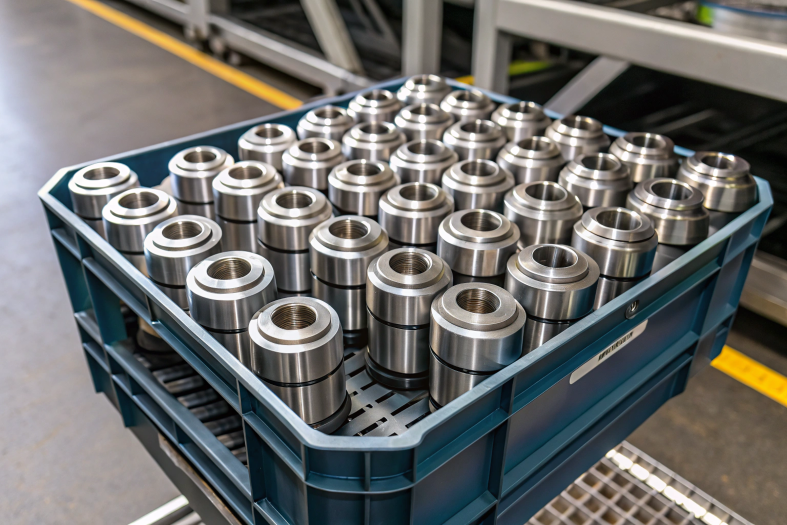
Conclusion
Achieving CNC accuracy is not a single-step process but a combination of several factors that need to be optimized. Regular machine calibration, high-quality tooling, environmental control, advanced software, and maintaining machine rigidity are all crucial components. By incorporating the insights and best practices discussed here, manufacturers can significantly improve the precision and efficiency of their CNC machining processes.
The data provided from leading research firms like Frost & Sullivan, McKinsey & Company, and Aerospace Manufacturing & Design, along with real-world case studies from companies such as Boeing, Toyota, and Stryker, demonstrates the effectiveness of these strategies in driving CNC machining accuracy. By applying these principles, businesses can ensure that their CNC operations remain at the cutting edge of precision manufacturing.
FAQ:
How to make CNC more accurate?
To improve CNC machine accuracy, focus on the following factors:
- Machine Calibration: Regularly calibrate the CNC machine using tools like laser alignment and ball-bar testing.
- Tooling Selection: Use high-quality, precision tooling and regularly check for tool wear.
- Environmental Control: Maintain stable temperature, humidity, and vibration-free conditions in the workshop.
- Advanced Software: Utilize advanced CAD/CAM software for optimal tool path generation and simulation.
- Maintenance: Ensure regular maintenance of machine components, such as spindles, ball screws, and lubrication systems.
How accurate is a CNC machine?
CNC machines can typically achieve an accuracy of ±0.001 inches (0.025 mm), with high-end machines reaching ±0.0001 inches (0.0025 mm). The precision depends on machine quality, tooling, environmental factors, and maintenance.
How accurate can a computer-controlled cutting machine be?
Computer-controlled cutting machines, including CNC lathes and mills, can be highly accurate, achieving tolerances as fine as 0.0001 inches (0.0025 mm). This level of precision is possible with advanced machine calibration, high-quality materials, and optimized cutting tools.
How to improve CNC efficiency?
To improve CNC machine efficiency:
- Optimize Tool Paths: Use CAD/CAM software to generate the most efficient tool paths and reduce cycle time.
- Automation: Implement automatic tool changers, robotic loading/unloading, and other automated systems.
- High-Speed Machining: Utilize high-speed machining techniques and advanced tooling for faster cutting without sacrificing precision.
- Regular Maintenance: Maintain machines regularly to prevent downtime and ensure consistent performance.
- Minimize Set-Up Times: Use quick-change fixtures and improve setup processes to reduce idle time.


